How to pet-proof your home but keep it looking beautiful
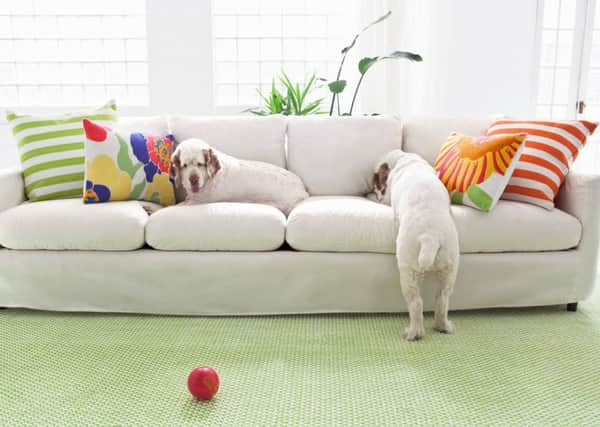

If you’re someone who can’t imagine life without a pet, but who also hankers after a beautiful home, then you’ll need to design and furnish your living space in a pet-friendly way. Consider each room individually, identifying potential hazards and vulnerable finishes and decide whether to adapt the room or keep your beloved pet out.
Preparing your home for a pet is a similar exercise to preparing it for a visiting toddler. All dangers need to be eliminated and all precious surfaces and treasured belongings protected or stowed away. Trailing cables should be tidied, concealed, or removed if possible, cupboards locked and anything small and easily ingestible, removed from reach. Your pet won’t distinguish between your best pair of Manolo Blahniks, your hand picked Christian Lacroix cushion or his or her favourite toy, so it’s up to you to protect both pet and possessions from each other.
Advertisement
Hide AdAdvertisement
Hide AdYour kitchen has drawers, cabinets, cables, tempting smells and tastes. Childproof latches will prevent many misdemeanors and keep dangerous foods and cleaning supplies beyond reach. Chairs can be dressed in slipcovers, which are easy to remove when you want the house to look at its best. We regularly make bespoke loose covers for all manner of different size dining chairs and armchairs, specifically with pets in mind.
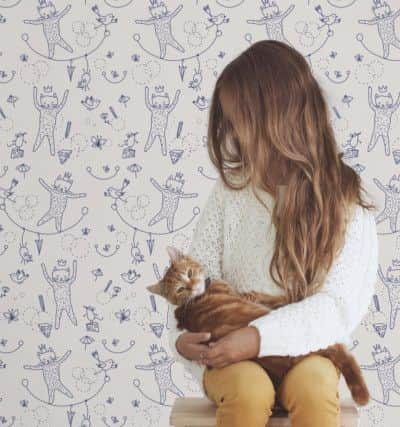

In the bathroom, there may be razors, tablets, soaps and smellies to consider. Keep the toilet lid down at all times, or keep the bathroom door closed. Make sure the rubbish bin has a locking lid or that it’s tucked away safely in a cupboard.
Dogs focus on scents, so they’ll be attracted to anything that smells like you. In the bedroom, this is particularly a problem. Any accessible shoes, slippers, electrical cables, straightening irons, hair driers and clothing are vulnerable to becoming playthings if left out. Jewellery, hair bands, earrings and coins all have the potential to become edible items in the eyes of your pet.
In a living room or family room, there are magazines, iPods, books, DVDs and special furniture — all kinds of things that could tempt a curious or teething animal; and in the office, papers, magazines, cables, paperclips, and other small paraphernalia could be fatal if swallowed. Plants are also attractive to pets, so be careful where you place them.
Advertisement
Hide AdAdvertisement
Hide AdIn terms of maintaining and protecting your décor, choose fabrics with small patterns and in dark colours. A small pattern means there’s less plain solid colour between the pattern to show up accumulations of pet hair and footprints, and dark colours are much more resistant to staining. Obviously, if you’ve a white-haired pet, a black fabric is not going to be the best choice so apply a common sense approach and opt for two-tone, forgiving greys instead.
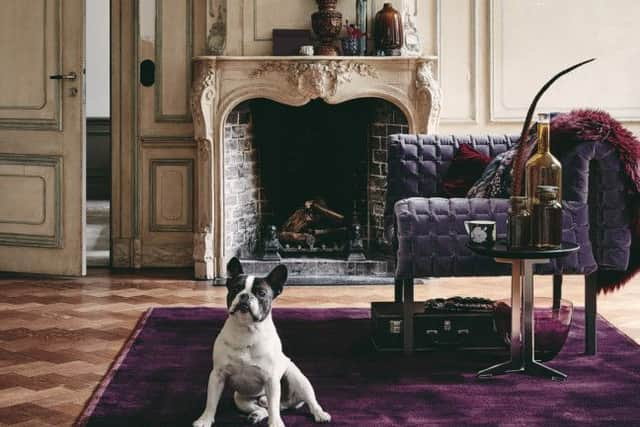

Some pet owners consider velvet to be the best choice for fabrics around the home; their reasoning being that unlike other upholstery fabrics, velvet has a cut pile rather than a loop pile, so there is very little for dogs and cats to catch their claws on. Others will tell you that velvets and chenilles are magnets for pet hair and are to be avoided at all cost. Tweed can be frustrating as pet hair gets easily caught in its uneven surface and silks should be reserved for curtains and blinds rather than furniture. Your aim should be to choose upholstery fabrics that create less work for you.
Leather is a good choice but isn’t beyond being damaged. Claws can scratch leather and cause holes that are tricky to repair. Keep them clipped short and you should reduce the likelihood of damage. Leather with a natural patina that ages over time will mean bumps and bruises add to the leather’s character rather than spoiling it. Hides that are dyed and then further treated, give even better protection.
For really hardwearing fabrics, Osborne and Little’s new Sea Breeze collection would be a good place to start. This new range of furnishing fabrics is suitable for use both inside and outside the home. Stain and mildew-resistant, they are highly durable, practical, come in a wide choice of patterns and colours and are stylish enough to look at home in even the most formal of living rooms. Cover your favourite cat cushion, dog bed, chair or sofa with something stunning from the range. Bespoke cat and dog beds are all the rage, whether mini-chaise longue or crocodile-shaped, tailoring your dog or cat bed to suit your décor is not as unusual as you might think!
Advertisement
Hide AdAdvertisement
Hide AdIf you’ve already set your heart on an exquisite fabric that’s not so durable, then use a throw to protect your sofas and chairs from pet hair, scratches and dribble. Cushion covers that zip on and off will be better than fixed upholstery as they can be removed and washed as often as is necessary and try to avoid sofas and chairs with skirts as they attract accumulations of hair and dust. Exposed legs are easier to keep clean and allow easy vacuuming beneath the furniture. Stay clear of long curtains puddling on the floor, Roman blinds may be a better alternative or wooden venetian blinds or shutters.
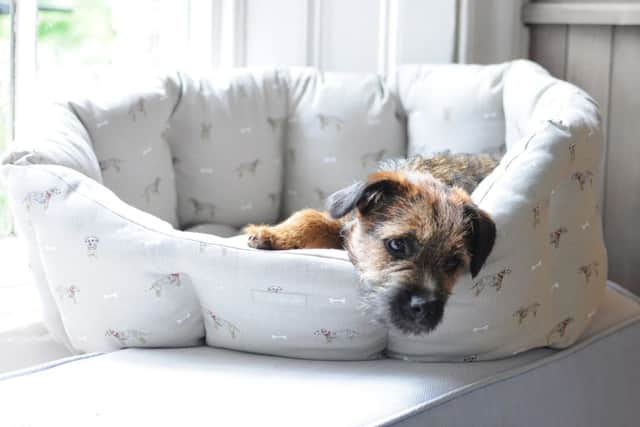

Hard flooring is the easiest surface to keep pet-occupied rooms looking at their best. Laminate, stone or ceramic tiles are easier to keep clean and stain-free than carpets. They are also cooler in warm weather, although you may need to add large rugs to prevent pets slipping on polished floors and to give them a soft and warm place to lie in the winter months. Rugs that are suitable for both indoor and outdoor use will fare better when scrubbed and cleaned, and are more resilient to the effects of the sun. If you have cats that like to dig their paws into a soft carpet,then flat weaves are preferable to deep pile rugs. And avoid loop piles at all cost, as these can be pulled easily by cats’ and dogs’ claws.
If you do opt for hardwood rather than laminate then be mindful that it’s easy to scratch and mark it and puddles will need attending to quickly as they can cause stains and warping on solid wooden floors. Oak and mahogany will always be a better choice than softer pine wood floors.
Carpets do have their benefits. When used wall to wall, they provide lots of places for pets to nap and they absorb sound, useful when toys are dropped, pets are chasing each other and claws are being scraped along the floor. Darker, earthy tones will mask the inevitable marks and unless you opt for a totally synthetic, bleach-cleanable carpet, those with a higher wool content will offer more inherent stain resistance than the man-made equivalent.
Advertisement
Hide AdAdvertisement
Hide AdPaint is going to be the best finish for walls, particularly wipeable semi-gloss-finishes in high traffic areas and satin and eggshell finishes in living rooms.
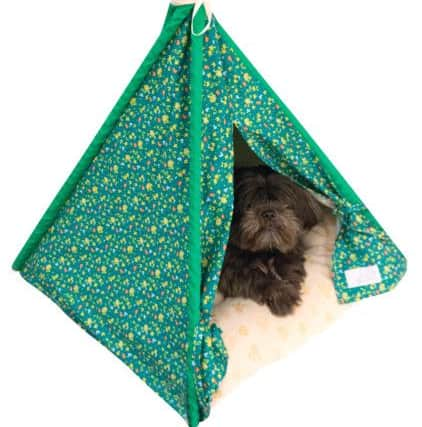

With furniture, select a round coffee table or those with rounded edges to protect your pet when they give chase or move quickly due to a fright. Better still, create an indoor area where your pet can play safely with a ball or toy without being likely to career into a cabinet full of glassware or a floorstanding television that could topple over. As your pet gets older and becomes more obedient and less manic, you’ll find you need to do less and less to protect both pet and home.
Pet-proofing your home should be seen as helping you combine your love for your pet with your love for your beautiful house. For many, one cannot exist without the other, so the key is to maintain conditions which both serve to enhance the other.